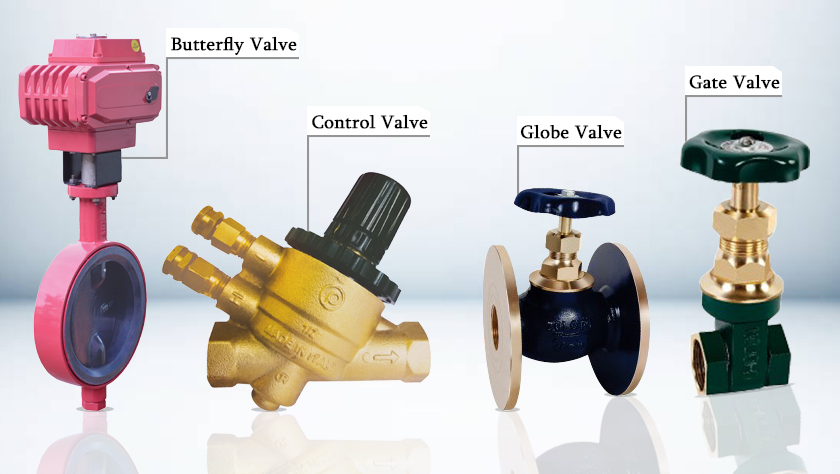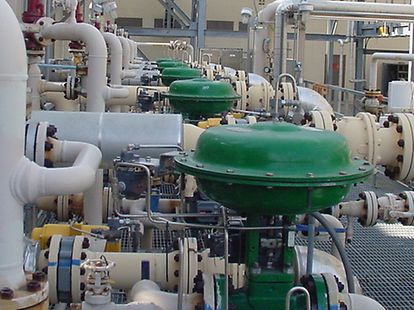Crucial Elements to Think About When Selecting Control Valves
Crucial Elements to Think About When Selecting Control Valves
Blog Article

Maximize Energy Financial Savings and Convenience With Advanced Building Automation Controls
In the world of modern style and center management, the integration of advanced building automation manages stands as a critical innovation. The merging of technology and sustainability has birthed a new era where energy effectiveness, comfort optimization, and operational streamlining are no longer achievable truths however far-off desires. By taking advantage of the power of automation, buildings can adapt, react, and progress in manner ins which were once unimaginable. The capacity for significant power financial savings and boosted convenience is not just a pledge yet a possibility waiting to be satisfied. This standard shift in building monitoring holds the essential to unlocking a world where environmental conscientiousness and occupant wellness sympathetically exist side-by-side within the wall surfaces of our structures.
Power Effectiveness Advantages
Energy effectiveness benefits can considerably reduce energy intake and operational prices in buildings. Energy-efficient systems, such as advanced building automation controls, can enhance the use of sources like cooling, home heating, and lights, leading to lower energy expenditures over time.
Additionally, enhanced power efficiency can lengthen the life expectancy of building tools and systems. By operating more effectively, heating and cooling systems, light, and other structure components experience less damage, causing reduced upkeep and substitute costs. Furthermore, energy-efficient structures frequently regulate higher property values and rental rates, supplying long-term monetary advantages to proprietors.
Moreover, power efficiency can improve owner comfort and performance. Effectively controlled interior environments with ideal lighting and thermal conditions create an even more conducive and pleasurable work space, leading to improved worker satisfaction and performance. Overall, the power effectiveness benefits associated with sophisticated building automation controls are diverse, including price financial savings, ecological stewardship, and occupant wellness.
Improved Convenience Control
Enhancing convenience control in building settings calls for an innovative assimilation of innovative automation systems for optimum owner health. By making use of innovative structure automation controls, centers can customize the indoor atmosphere to meet the particular demands and preferences of occupants. These systems enable precise regulation of temperature level, lights, and air flow, producing a productive and comfortable atmosphere. Occupant contentment and performance are carefully linked to thermal convenience, making it important to have systems in location that can adapt to transforming conditions in real-time.
Boosted comfort control goes beyond basic temperature modifications. It includes attributes such as individualized settings, tenancy sensors, and all-natural light utilization to create a receptive and vibrant atmosphere. By integrating these innovative controls, buildings can not just enhance comfort yet additionally enhance power efficiency by optimizing system operations based upon actual occupancy and use patterns. Ultimately, focusing on owner convenience with sophisticated automation systems results in an extra pleasurable and healthier indoor environment.
Functional Effectiveness Improvements

Moreover, the application of real-time surveillance and analytics tools makes it possible for structure operators to identify energy ineffectiveness and operational abnormalities immediately. By continually monitoring energy use patterns and system efficiency metrics, modifications can be made in real-time to maximize energy consumption and make sure peak functional efficiency. control valves. Additionally, integrating need feedback methods into structure automation controls can further enhance functional effectiveness by dynamically changing power use based upon grid conditions and prices signals
Indoor Climate Optimization
Reliable indoor environment optimization is an essential aspect of building automation controls, ensuring owners' comfort click site and wellness while optimizing energy cost savings. By utilizing innovative sensors and controls, constructing automation systems can continually change and monitor temperature, moisture levels, air high quality, and air flow to create an ideal interior atmosphere. Preserving comfy and regular problems not just improves resident satisfaction but additionally enhances efficiency and general well-being.
Interior climate optimization also plays a critical function in energy effectiveness. By fine-tuning air flow, cooling, and home heating systems based upon real-time information and occupancy patterns, building automation controls can considerably reduce energy usage - control valves. Carrying out techniques such as demand-controlled air flow and thermal zoning can aid lessen power waste while making certain that each location of the structure obtains the needed conditioning.

Sustainable Environment Production
Structure automation manages not just maximize indoor climate conditions for energy efficiency and owner comfort but likewise lay the click structure for developing a lasting setting via tactical monitoring of resources and systems. By integrating advanced building automation technologies, such as sensing units, actuators, and smart software program, centers can monitor and adjust energy use in real-time to lessen waste and decrease their carbon impact. These systems enable predictive maintenance, identifying prospective concerns prior to they escalate and enhancing devices performance to boost long life and efficiency.
Additionally, sustainable environment development prolongs past power monitoring to include water conservation, waste decrease, and interior air high quality improvement. Building automation controls can manage water use, identify leakages, and guarantee proper garbage disposal techniques, adding to general sustainability initiatives. In addition, by keeping an eye on and managing air flow and filtration systems, these modern technologies boost resident health and performance while reducing energy usage related to HVAC procedures.
Conclusion
To conclude, progressed building automation regulates deal considerable advantages in regards to power financial savings, convenience control, operational effectiveness, indoor climate optimization, and creating a sustainable setting. By applying these controls, structures can achieve ideal efficiency while reducing power consumption and enhancing occupant convenience. It is evident that using advanced automation technology is important in enhancing building performance and developing a much more lasting future.
Power efficiency benefits can dramatically decrease power consumption and functional costs in buildings. Generally, the energy performance advantages connected with sophisticated building automation controls are multifaceted, incorporating cost financial savings, ecological stewardship, and passenger well-being.
In addition, incorporating demand reaction methods into structure automation controls can additionally boost functional efficiency by dynamically adjusting energy usage based on grid conditions and pricing signals.
Building automation manages not just optimize indoor environment conditions for energy efficiency and resident convenience yet additionally lay the structure for creating a sustainable environment through tactical administration of systems and sources.In conclusion, advanced structure automation regulates deal substantial benefits in terms of power cost savings, convenience control, functional effectiveness, indoor climate optimization, and creating a sustainable environment.
Report this page